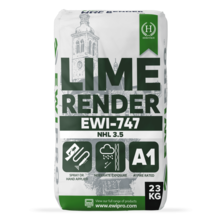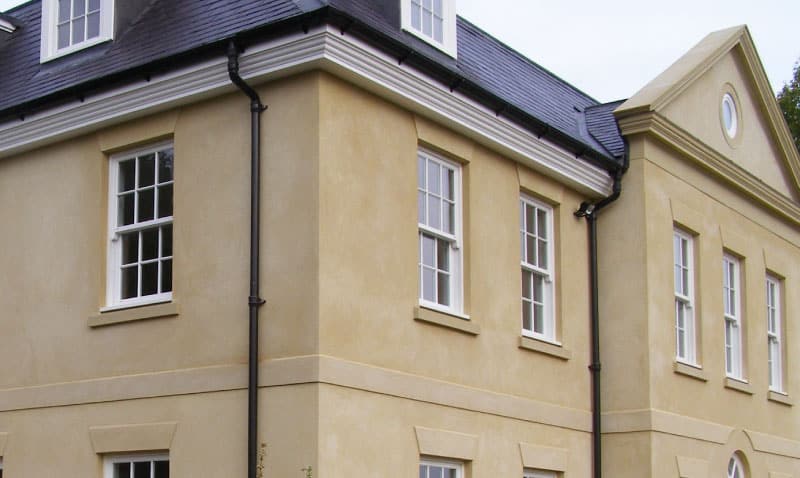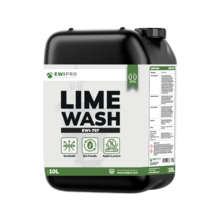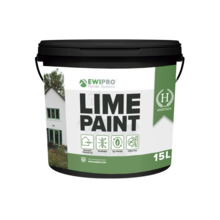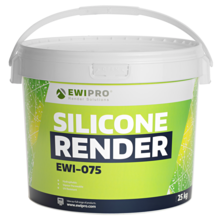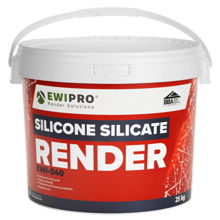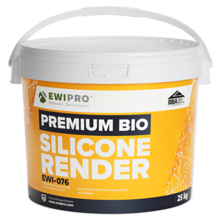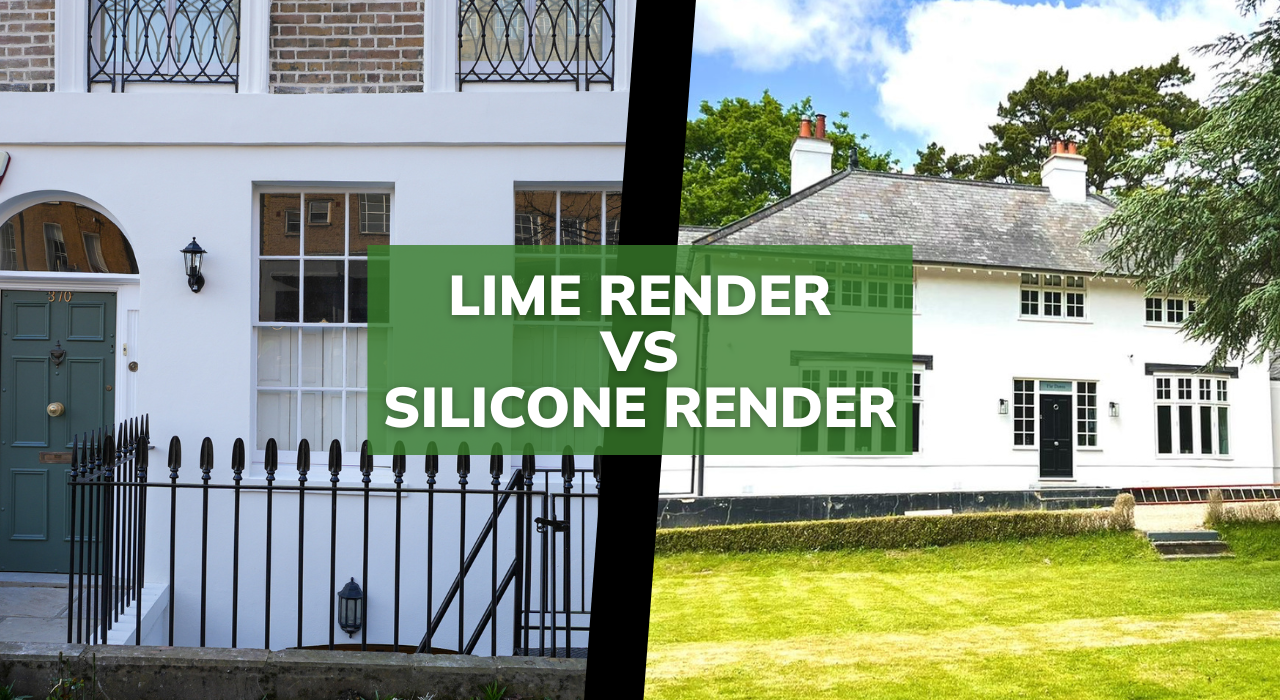
- What Is Lime Render?
- Key Benefits of Lime Render
- Compatible Products with Lime Render
- What Is Silicone Render?
- Key Benefits of Silicone Render
- Types of Silicone Render Available at EWI Store
- 1. EWI-075 Silicone Render
- 2. EWI-040 Silicone Silicate Render
- 3. EWI-076 Premium Bio Silicone Render
- 4. EWI-077 Nano Drex Silicone Render
- Lime vs Silicone Render: Comparison Table
- Which Should You Choose?
- Based on Building Type
- Based on Climate and Exposure
- Based on Sustainability Goals
- Based on Budget and Lifecycle Costs
- Explore Renders at EWI Store
- Need Help Choosing?
When choosing a render system for external walls, lime render and silicone render are two widely used options. Both serve different purposes and suit different types of buildings. This comparison will guide you through their features, ideal uses, maintenance needs, finishes and associated costs, helping you make an informed decision.
What Is Lime Render?
Lime render is a traditional mix of lime, sand and water, commonly used to finish and protect solid wall buildings, especially those built before the 1930s. It is highly breathable, allowing moisture to escape from the building fabric, which helps prevent damp and mould.
Key Benefits of Lime Render
-
Breathable finish – Ideal for solid-walled properties as it allows trapped moisture to evaporate
-
Flexible – Accommodates minor movement in older buildings, helping to prevent cracking
-
Eco-friendly – Lime absorbs CO₂ as it cures, making it a low-carbon building material
-
Traditional appearance – Offers a textured, heritage look suitable for listed and period properties
Compatible Products with Lime Render
-
Lime Wash – A natural, breathable finish applied over lime render. It enhances weather resistance while preserving breathability
-
Lime Paint – Offers more colour options than lime wash and is similarly breathable. Suitable for internal and external use
- Lime Plaster – Used to achieve a smoother, more refined finish than lime render, both internally and externally. It offers a natural white appearance and can be sealed with lime wash to maintain breathability and protect the surface
-
Insulating Cork Render – A breathable, insulating render that can be used over or instead of lime render in eco-conscious builds
What Is Silicone Render?
Silicone render is a modern, pre-coloured render system made from a blend of silicone resins, cement and mineral fillers. It’s known for its hydrophobic, self-cleaning properties and excellent performance in the UK’s varied climate. At EWI Store, we offer several types of silicone render to suit different projects, substrates and aesthetic requirements.
Key Benefits of Silicone Render
-
Water-repellent – Its hydrophobic properties ensure water runs off the surface, reducing the risk of water ingress
-
Low maintenance – Its self-cleaning qualities mean dirt and grime are washed away naturally by rain
-
Durable and UV-resistant – Withstands harsh weather and UV exposure without fading or cracking
-
Wide colour range – Available pre-coloured with excellent colour retention and finish consistency
Types of Silicone Render Available at EWI Store
At EWI Store, we stock a complete range of silicone renders, each designed to meet specific requirements - from standard applications to projects demanding superior durability, breathability, or protection from organic growth.
1. EWI-075 Silicone Render
-
Our most popular topcoat render
-
Offers a smooth, coloured finish with excellent water-repellent and self-cleaning properties
-
Designed for use on a variety of substrates, particularly as part of external wall insulation systems
-
Available in grain sizes: 0.5mm, 1.0mm, 1.5mm, 2.0mm and 3.0mm
-
Wide colour range with exceptional UV resistance
2. EWI-040 Silicone Silicate Render
-
A hybrid render combining silicone and silicate for a breathable yet hydrophobic finish
-
Allows moisture vapour to pass through the substrate, ideal for buildings requiring higher vapour permeability
-
Offers a slightly more mineral-like texture than pure silicone renders
-
Great for traditional properties and retrofit projects
3. EWI-076 Premium Bio Silicone Render
-
Enhanced with biocides to protect against algae and mould growth
-
Best suited for properties in shaded or damp environments
-
Highly durable, low maintenance and extremely weather-resistant
-
Superior performance in high-rainfall or coastal areas
4. EWI-077 Nano Drex Silicone Render
-
A next-generation render featuring nanotechnology for even better water repellency and dirt resistance
-
Offers a highly advanced self-cleaning façade that repels pollutants, dust and organic growth
-
Excellent UV stability and extremely resistant to weathering
-
Ideal for high-traffic or polluted environments where façade longevity and cleanliness are key
SHOP EWI-077 Nano Drex Silicone Render HERE
Lime vs Silicone Render: Comparison Table
| Feature | Lime Render | Silicone Render |
|---|---|---|
| Breathability | Excellent | Moderate |
| Water Resistance | Low | High |
| Flexibility | High | Moderate |
| Appearance | Textured, traditional | Smooth, modern |
| Eco Credentials | Natural, CO₂-absorbing | Higher embodied carbon |
| Maintenance | More frequent | Minimal |
| Ideal Use | Historic or breathable walls | Modern builds, EWI systems |
Which Should You Choose?
Based on Building Type
-
Lime Render is better suited for older properties, heritage buildings and solid wall constructions such as stone, cobble or brick. Its breathability and flexibility help maintain the fabric of the building
-
Silicone Render is ideal for modern homes or refurbished properties with external wall insulation. It offers a clean, long-lasting and easy-to-maintain finish
Based on Climate and Exposure
-
Choose silicone render in wet or coastal areas where water repellency and low maintenance are key
-
Choose lime render in moderate climates or where maintaining the traditional breathability of the building is more important
Based on Sustainability Goals
-
If sustainability is your priority, lime render, combined with natural finishes like lime wash, lime paint, lime plaster or insulating cork render, provides a highly eco-conscious solution.
-
Silicone render, though not as sustainable initially, offers longevity and durability which can offset environmental costs over time.
Based on Budget and Lifecycle Costs
-
Lime render tends to be more cost-effective per m² but requires more frequent reapplication or patching, particularly in exposed areas.
-
Silicone render has a higher upfront cost but lower maintenance needs, offering savings over the building’s lifespan.
Explore Renders at EWI Store
At EWI Store, we stock both lime render systems and silicone render topcoats, along with compatible finishes like lime wash, lime paint, lime plaster and insulating cork render. Whether you're renovating a listed cottage or updating a new-build, we can help you find the best solution.
-
Shop our Heritage Lime Range
-
Browse our Silicone Renders & Finishes
-
Order sample pots to test colours and textures before you commit
Need Help Choosing?
Still unsure whether lime or silicone render is right for your project? Our team is on hand to offer personalised advice based on your building type, climate and aesthetic goals. Give us a call on 0203 397 4067 or text our WhatsApp number on 0741 837 2281

